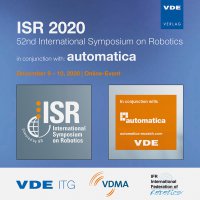High Fidelity Real-Time Hybrid Substructure Testing Using Iterative Learning Control
Konferenz: ISR 2020 - 52th International Symposium on Robotics
09.12.2020 - 10.12.2020 in online
Tagungsband: ISR 2020
Seiten: 7Sprache: EnglischTyp: PDF
Autoren:
Insam, Christina; Kist, Arian; Rixen, Daniel J. (Technical University of Munich, Chair of Applied Mechanics, Germany)
Inhalt:
Testing of critical parts is a crucial step in ensuring a timely and cost-effective development of complex dynamical systems. Tests should be carried out with realistic boundary conditions and high fidelity such that the function of a component in the later application can be assured. Real-Time Hybrid Substructuring (RTHS) is a test method that enables testing of critical parts under realistic boundary conditions. Here, the critical part is mounted on a test bench and coupled in real-time to a co-simulation of the surrounding structure. The coupling involves a controlled actuator and, for a high fidelity of the RTHS test outcome, the tracking of this actuator needs to be ideal. If the actuator is not ideal and introduces its own dynamics, it makes the coupling inaccurate and at worst even unstable. In this contribution, we investigate the applicability of P-type Iterative Learning Control (PILC) to RTHS and whether it can improve the tracking performance of the actuator and thus the fidelity of the test for consecutive trials. We investigated a one-dimensional mass-spring-mass system using RTHS and PILC and performed RTHS tests. The tests were first conducted purely in simulations and then experimentally. We considered two distinct cases: (i) a system where the coupling is stable but inaccurate in the first iteration and (ii) a system that is unstable due to actuator dynamics in the first iteration. Results reveal that the PILC manages to improve tracking performance and fidelity of the RTHS test for the stable system (i), but it does not stabilize the unstable coupling (ii). This preliminary research implies that PILC can be a useful tool to improve the fidelity of RTHS tests. However, the robustness of the scheme needs to be improved in future work.


